"We all need to look into the dark side of our nature - that's where the energy is, the passion. People are afraid of that because it holds pieces of us we're busy denying." -Sue Grafton
No, not the dark side of our nature, just the dark side of nature! Because if all our Universe were made out of were atoms and photons, we wouldn't get a Universe that looks like ours.
What do I mean? Let's take a look.
The Universe starts off as a very smooth place, where regions that are denser or less dense than average are only something like 0.003% away from average. To put it in economic terms, if the average salary were $50,000 a year, the richest person would make about $3 extra, and the poorest person would make about $3 less than average.
But that's the early Universe. Over time, those richer, denser regions attract more and more matter, growing in size and scope.
Animation credit: Center for Cosmological Physics, National Center for Supercomputer Applications, and Andrey Kravtsov (U. Chicago) and Anatoly Klypin (NMSU).
Today, we see the very densest regions as being the places with the greatest concentrations of galaxies, and the least dense regions are devoid of almost all matter.
We can even still find galaxies merging today; evidence of the legacy of these small gravitational inequalities from when the Universe was billions of years younger than it is today.
But it isn't like we just get giant clumps of galaxies that fall in to one another, and collapse under gravity. As much as we like to pretend that gravity is the only thing that matters in the Universe, there's another force that's often just as important.
Don't believe me? Then think about the biggest, brightest, close object to you in the Universe. 300,000 times as massive as the planet Earth, the Sun's gravity is absolutely tremendous.
And yet the Sun is less dense than the Earth is! That's because there's something holding the Sun up that the Earth doesn't have: radiation pressure!
All the nuclear fusion happening at the core of the Sun produces a gargantuan amount of energetic photons. It's so powerful that, at the Sun's surface, the outward pressure is enough to counteract the force of the Sun's gravity, and that's why the Sun doesn't contract or collapse.
And then we come to the Universe.
Sure, today, the Universe looks a lot like this. The pressure from radiation is totally negligible except in the hottest and densest of objects, like stars.
But go back in time, to when the Universe was very young, and radiation was of incredible importance! In fact, for the first 10,000 years of the Universe or so, it was even more important than matter! Which means, during this time, if you were matter trying to collapse under the influence of gravity, radiation pressure would bounce you back out!
This is part of why the early Universe is so smooth, for certain. But this feature -- matter trying to collapse under the influence of gravity vs. radiation pressure pushing it back out -- creates a "wave" or "ripple" like you see above. You can see a dense region at the center, you can see it get sparser and sparser as you move away, and then it gets denser once again.
This feature, created by normal atoms (baryons) and radiation (photons), is known as an acoustic oscillation. Why? Because it's a pressure wave, just like sound is! The only difference is, this type of wave determines how galaxies group together.
So if we go and measure how far apart the galaxies in the Universe are spaced from one another, we can figure out:
- What percentage of the matter is normal matter,
- What percent is dark (non-baryonic) matter, and
- How quickly the Universe has expanded since, or what percent of the Universe is dark energy!
It's a very clever way to do it, and it's a brilliant way to check our laws of gravity. If we're doing it correctly, and General Relativity is right, we should, by measuring these galaxies, see how the Universe has expanded from the Cosmic Microwave Background over billions of years to form galaxies, and then from those galaxies to our eyes.
Well, the WiggleZ team from Australia just released their results this week: the most comprehensive survey -- of 200,000+ galaxies -- designed to measure dark energy by this method.
Their results are a spectacular confirmation of the best prediction of our Universe: one where 70-75% of the energy is dark energy, and where the total amount of baryons is only about 4-5%, with the rest being dark matter. They also found, to the best of their measurements, that dark energy is, in fact, a cosmological constant, with no change over time and the correct equation of state. (I.e., it gives the right pressure/energy density combination to be a cosmological constant.)

Led by Warrick Couch and Michael Drinkwater, and also with scientists such as Chris Blake and Karl Glazebrook, the WiggleZ dark energy survey has been a smashing success, and I'm happy to report that the team appears to have done everything impeccably. Some good press coverage is available here and here, as well as the full press release here.)
The full WiggleZ team (as best as I can find) is pictured below.

And I'd like to say, on a personal note, I'm really impressed, and I'm really happy for all of this!
Most of you don't know this, but before I turned the bulk of my energies towards communicating and teaching science, I was offered a job at Swinburne, working with the WiggleZ team. (Check it out on the old job rumor page.) They were a great group, and they made the job decision an extremely difficult one for me, because I could tell they were doing exciting, top-notch science, and it's great to see it come to fruition like this, even if I wasn't a part of it. Every once in a while, I let my imagination wander to the life I would have had if I had taken it, and all I know is that it would be vastly different than the one I'm living now.
But who knew, more than four years ago when I made that decision, that I'd be telling thousands of you about their smashing success?!
This is another great success for dark matter, dark energy, and the standard big bang picture of the Universe, and yet another tremendous challenge for alternative theories to explain. All you have to do is measure how far apart galaxy pairs are, how that distance changes as the Universe expands, and that's one new way for you to measure dark energy, completely independently of supernovae!
Congratulations to the entire WiggleZ team, and to all of you for learning about the latest, greatest confirmation of the most mysterious force in the Universe!

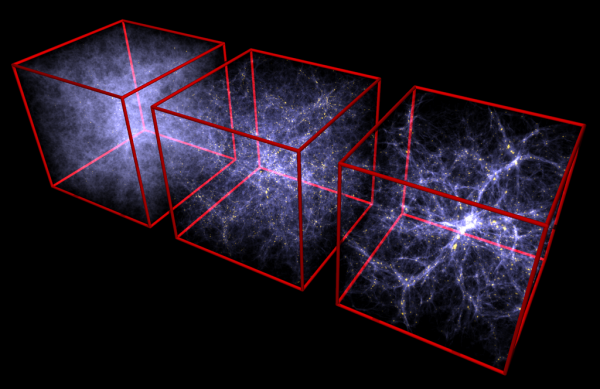
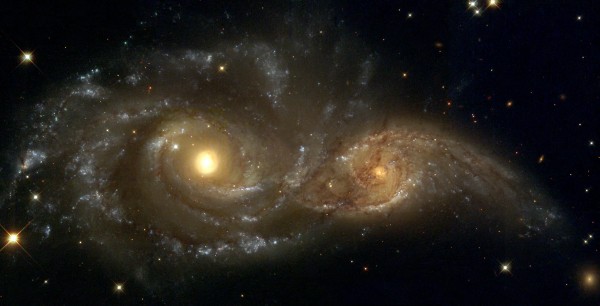
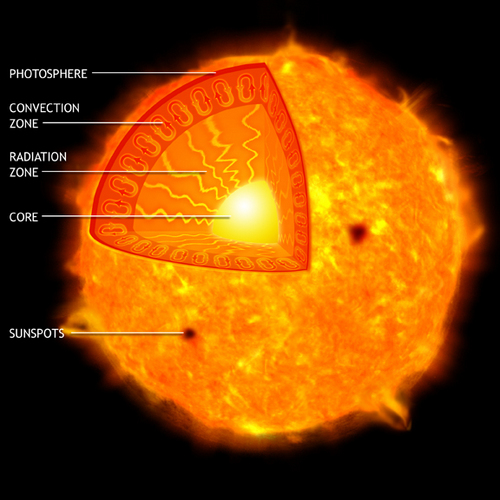
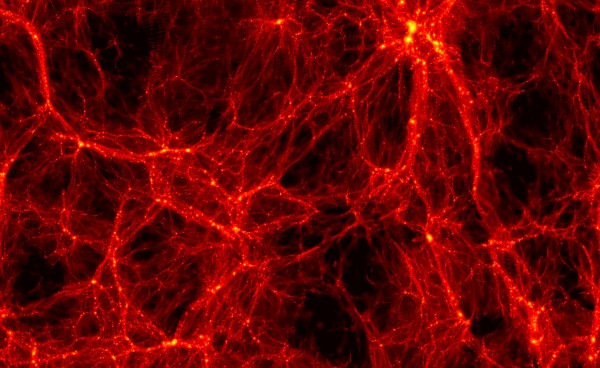
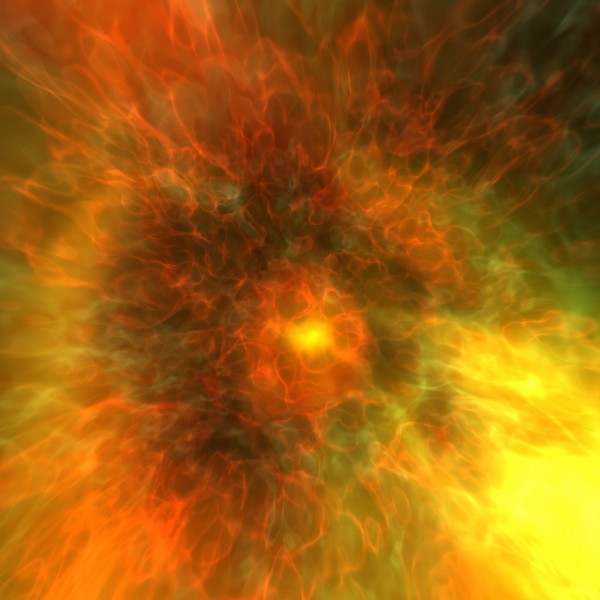

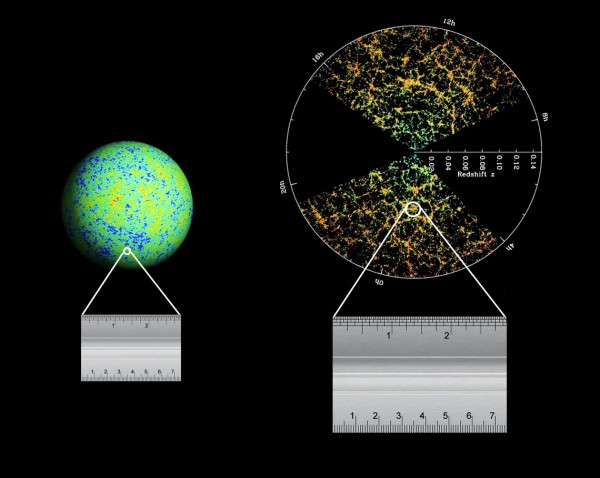
Ãzge Ulusoy Bayıldı! Survivor'da gergin anlar... Survivor'ın Cumartesi günü yayınlanacak olan bölümünde sinirler yine geriliyor. Geçen hafta Asena'nın elenmesinden sonra Nihat DoÄan zafer kutlamalarına adada devam etti.
Ooohhh yeeaaaahhh.
RIP
0.003% of 50,000$ is only 1.5$ but apart from that you have a great blog. I love your posts.
Cheers
You know it bugs me when I see these reports that relate Dark Energy to anti-gravity there is no such thing!
Why don't they use a better analogy, like lack of Gravity?
Thank you Ethan. Like always great. I am sure, your decision to turn yourself in to teaching science is worthy and admirable. You are able to teach good; making sophisticate scientific topics understandable.
Pareidolia!
Thanks for the picture of the colliding galaxies. That’s the face of the Flying Spaghetti Monster for sure!
Sphere Coupler-
"Lack of gravity" wouldn't cut it. The effects of dark energy are not simply a decrease in the acceleration due to gravity. It is in fact causing an increase in the rate of expansion.
What I'm wondering about is the statement about dark energy being a cosmological constant. That means that it has a fixed density, thus a proportionately increasing effect as space expands? And yet, it's part of the mass-energy composition of the Universe? I still don't understand how that works out.
Tineye suggests http://www.dmns.org/ .
ABDânin geleceÄinin, kendilerine coÄrafi olarak âçok uzaktaâ olsa da ekonomi, güvenlik ve tarih açısından bakıldıÄında OrtadoÄu ve Kuzey Afrika bölgesine baÄlı olduÄunu söyleyen Obama, Suriye Devlet BaÅkanı Esadâa oldukça sert bir uyarıda bulunarak, âEsad artık bir seçim yapmalı. Ya dönüÅüme öncülük eder, ya da yoldan çekilir. Suriye hükümeti, göstericilere ateÅ açmayı bırakıp, barıÅçıl gösterilere izin vermeli ve siyasi tutukluları serbest bırakmalıâ dedi
Peter,
First and foremost, you will never, ever hear a legitimate physicist seriously use the term anti-gravity in a attempt to explain any proper physics, it is not possible.
If you understand General relativity, then you know that mass warps space and that warping of space is gravity, the amount of mass and it's distance and density is relevant to this function.The ever increasing Expansion of space, leads to the ever increasing lack of gravity.
The Hype that you'll read in such articles is intended to hook the reader and keep his intrigue and interest, do not fall for these mis-wordings...it is hype.
I have never seen a pivotal science paper that would use such jargon.
(I know what you meant to imply here)
The effects of the Dark Energy does not decrease the acceleration.The effects of DE increase the acceleration rate of expansion rate of the expanding space.
You may be thinking of gravity as a force of attraction...Stop that, that is an illusion, Gravity is the curvature of space and it is this curvature that allows mass to interact with other mass.
If you have an ever increasing lack of curvature of space then mass is denied access to curvature at an ever increasing rate, thus due to lack of density, increase in distance and it's accelerated momentum by an increasing reduction ratio of mass to the vacuum energy.
Go into Ethans archives and read, lots of good stuff and read Wikipedia(it gets better everyday).
Thanks to Sphere Coupler for the analogy: "gravity is the curvature of space". Many even today are still conceiving of space as fixed and immutable as proposed by Newton.
However, I am still looking for an analogy which does not use the ubiquitous cannonball on a rubber membrane.
Why? Because what is assumed but never mentioned is, yes just that, gravity, whose effect is to pull other objects to the cannonball, or to fall into the hole, if you prefer.
I would prefer an explanation which does not leave unnamed factors as active forces.
Can anyone help?
Lastly, I was musing last evening over conceiving that all points in space are effected by the combined vectors of gravity waves from all other masses in the universe. And that conceivably there could be contigous points, ie lines, of zero attraction. As each point is an intersection of gravity fields,and no appreciable gradient effect is available in our timeframes.
I got stuck when considering to what effect they would have on "space travel".
Any help?
Are you thinking of;
http://en.wikipedia.org/wiki/L2_point
or something more dynamic?
If so, see Ethans post;
Add the http copy/paste
://scienceblogs.com/startswithabang/2010/05/a_mysterious_light_on_the_dark.php
I didn't know that the sun was in danger of falling down. Your terms like "holding the sun up" are very concerning.
Interesting that there is 200%+ more dark matter than matter in the universe yet we have none in our solar system. Look to our solar system and you'll find two forces that influence the positioning of bodies, gravity and initia. Astonomers would be smart to stay to these two forces in determining the shape of galaxies. Dark Stars (some call Holes) have radiating gravitational beacons in opposite directions that influence the shape of galaxies.
to sphere coupler,
if i remember right L2 and L1 are balance points in the solar system.
what i'm thinking of is instead the fact that at any point in the "vacuum" surrounding us, there are always a summation of gravitational forces from all masses in the universe, since the reach of gravity is infinite. Although it's effect is reduced by the inverse square of the distance, ie if you double the distance, the effect is reduced by four.
Thus it is possible that more points exist, besides L2 and L1, where gravity forces cancel out; and that these could be contigous like contour lines in the terrain.
What do you think?
What I like about your reasoning is you don't like sloppy analogies. Thanks again.'
Yeah I had a thought that might have been similar to yours, in which if you progressed all super clusters of galaxies to an end points as a super massive black holes and then treated the SMBH's as as Lagrangian points of adjoining Universes...Is that along the lines you were thinking?
http://scienceblogs.com/startswithabang/2010/05/a_mysterious_light_on_t…
Com 5
Or perhaps your considering a Lagrangian point between galaxies as they now exist, such as a point between the Milky Way and Andromeda?
OK, upon rereading, I'm picturing a three D checker board wherein each square represents a number and that number is a summation of all gravitational bodies for each square, (within our visual sphere?)
The curvature of space is a summation, so the moon orbits the Earth, as the moon also orbits the Sun, as it also orbits the Galactic center and the moons curvature that it follows is a summation of all curvature, yet location and mass density rival and are seen easier on a local scale.
Close?
I'll have to think a while on that.
You're way ahead of me there.
Myself, i'm just out there in space, imagining I can visualize gravity gradients, and wondering what I can use that knowledge for. Like whales and homing pigeons following their sense to follow geomagnetic lines.
What practical use do I have of this sense?
Get back later when I've looked into Lagrange and adjoining universes, etc.
Thanks meanwhile-
@idealist707
Every pair of mutually orbiting bodies has five Lagrangian points, even the Earth-Moon system. The most stable of these regions are the Trojan Points, L4 & L5.
Perhaps it would be worth trying to to scoop some Invisible Dark Matter particles from the two Earth-Moon Trojan Point regions of space rather than try to look for the stuff down deep mines, as some scientists are currently doing (to no avail).
Alan, I think it is very unlikely that there would be any accumulated there. Dark matter in orbit around the galactic center has to dissipate energy and momentum to be captured at a Lagrangian point.
"This is another great success for dark matter, dark energy, and the standard big bang picture of the Universe, and yet another tremendous challenge for alternative theories to explain. All you have to do is measure how far apart galaxy pairs are, how that distance changes as the Universe expands, and that's one new way for you to measure dark energy, completely independently of supernovae!"
The quote above is from Ethan's great article. The quote below is from my readings of this study through secondary sources and it appears that the authors were primarily trying to distinguish between two mainstream hypothesis which was the primary basis for this study, one possibility for dark matter being "a cosmological constant" such as Einstein first proposed in his cosmological equations, and the alternative mainstream model of a type of "scalar field" the primary model of which is called quintessence or moduli, a type of variable expansion possibility. Between these "two possibilities" they asserted that the data supported an even rate of accelerated expansion A.K.A. dark energy: a cosmological constant rather than quintessence.
"Two proposed forms for dark energy are the cosmological constant, a constant energy density filling space homogeneously,[3] and scalar fields such as quintessence or moduli, dynamic quantities whose energy density can vary in time and space. Contributions from scalar fields that are constant in space are usually also included in the cosmological constant. The cosmological constant is physically equivalent to vacuum energy. Scalar fields which do change in space can be difficult to distinguish from a cosmological constant because the change may be extremely slow."
quote from the wiki link:
http://en.wikipedia.org/wiki/Dark_energy
I think that this study over 5 years of time and 40,000 galaxies was a monumental task just from a few happy looking people (and for that reason probably cool too!) in the picture that Ethan posted. congrats to them for their great efforts and findings!! with my addendum quote, "discoveries are not always what you think they are" Quote me -- but that does not distract from the facts revealed. Discoveries, even accidental, are what Nobel Prizes are made of.
That being said, I think they might have tried to address (as I think some others will try to do using their findings) the many other mainstream alternatives that have been proposed; I can think of four, as well as seemingly countless alternative models including my own which asserts that both dark energy and dark matter do not exist. I don't expect them to find alternative models or publications such as mine or to consider them, but other mainstream models in mainstream publications at least, I think, should have "had some play" in their formal response.
Both dark energy, dark matter, and Inflation most certainly add complication to the BB model which in itself is entirely based upon the expanding universe model. Take this keystone away and the whole BB pyramid collapses.
I think in deference to their reporting, there still is no evidence that the universe was more dense in the past. At about 7 billion years ago galaxies should have been 8 times more dense based upon the volume of a sphere and its expansion concerning an expanding universe, and no galaxies seemingly should have been as big as the Milky Way 13 billion years ago. -- yet there is evidence for such past galaxies. Without this proof of past density of collective galaxies, the Big Bang model will remain an unproved model, in my opinion, waiting for some other model to certainly replace it in its entirety if it is wrong (maybe just a decade or less after the James Webb telescope goes up.)
As far as my own cosmological model is concerned, which for the observable universe is a steady-state model (i.e. that the universe is older but still finite in age and volume), accordingly the universe should appear the same as far back a we can look. There have been observational reports to suggest this might be true but maybe more that contradict it. I have a list of dozens of past observational studies that seem to contradict the age appearance, and galaxy density of the distant universe.
Another comment. There were only two participants of the study that to me do not appear to have a smile in the photograph above : Four deep left-hand side back row dark shirt, and two deep right hand side whitish colored shirt (a couple of others seemingly marginal).
Either they didn't like the conclusions of the study or they didn't like the joke of the photographer -- or both :)
@daedalus2u
Why not?
Sol's latest galactic orbital velocity estimate (hipparcus data) is 251 kps. Unless I've misremembered, the maximum velocity of Invisible DM has been calculated as 8 kps in galactic halos, where it appears to be found in great abundance.
Regardless, looking for IDM in deep mines has proved to be an exercise in futility and perhaps it might be time for scientists to re-examine the assumptions made about the properties of IDM.
Unobtainium, dark matter, melanin, doesn't matter what they call it. The blackness was always there and a huge part of the universe. Because they can't get to it to disect it as they do every other natural resource it's easier to tell people it not real and doesn't exist. It has always existed but is a cosmic substance that humans cannot break down. Research on it is very limited still but to act like it's not there is crazy. You look at it every night in the sky but you can't describe it other than dark matter or space.
For sure, these guys did some amazing science that I need to be understood.
Just a couple of quotes from their two papers.
"This intermediate sample of the WiggleZ Dark Energy
Survey, containing N = 132,509 galaxies, permits a convinc-
ing detection of baryon acoustic oscillations at the highest
redshift achieved to date, z = 0.6. We have quantified the
baryon oscillations in both the galaxy correlation function
and power spectrum statistics. The statistical significance of the correlation function detection exceeds 3-Ï."
"The physical nature of dark energy is not yet understood. Several explanations have been put forward including the presence of smoothly-distributed energy such as a cosmological constant or a quintessence scalar field, a large-scale modification to Einsteinâs theory of General Relativity, or the effects of spatially-varying curvature in an inhomogeneous Universe. Further observational data is required to distinguish clearly between the subtly-varying predictions of these very different physical models (e.g., Linder 2005,Wang 2008, Wiltshire 2009)."
I'm reading the two papers here and here:
http://arxiv.org/PS_cache/arxiv/pdf/1105/1105.2862v1.pdf
http://arxiv.org/PS_cache/arxiv/pdf/1104/1104.2948v1.pdf
There's a lot to understand in Ethan's blog and even more in these two papers. I'll try to get some adequate understanding of the importance of this work.
As a clarification to my above comment 10, I meant in no way to detract from the worthiness of the accomplishments of the wiggle z team.
My only contest is the statement from one of the interviews reported by a.b.c.of a quote by Blake (which I think is a poor chose of words)
At best to grab headlines, when their work speaks for itself and needs no hype.
"This implies the most distant parts of the universe which are further back in space-time, have ordinary matter and hence gravity is dominating. But today this anti-gravity dark energy has taken hold."
And yes as time progresses the furthest distances might act like *anti gravity*(a severe lack of gravity + increased momentum, but this is not clear in the article as implied and once again I think the research was not correctly reported.
An increasing acceleration of space can act like *anti-gravity*, yet it is not *anti-gravity*, and has no other feature that would be applied as *anti-gravity*.
*Anti-gravity* is sci-fi.
The term does grab the imagination of the reader.
I just wanted to clear that up, before the end of the month.